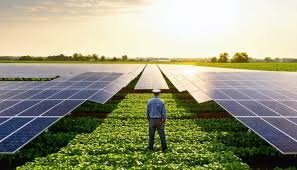Leasing Illinois farmland for solar development offers three compelling advantages. First, landowners secure reliable 25-30 year income streams of $800-1,200 per acre annually, greatly outperforming traditional crop rental rates. Second, the passive income model eliminates seasonal labor, equipment costs, and crop insurance requirements. Third, solar projects align with state renewable energy goals while preserving long-term land value through minimally invasive mounting systems. For landowners exploring renewable energy opportunities, learning how to lease your Illinois farmland for solar can be a game-changing financial decision. These key benefits warrant deeper exploration of solar lease opportunities.
Reliable, Long-Term Income With Minimal Risk
When Illinois farmland owners lease their property for solar development, they secure a stable revenue stream that typically spans 25-30 years with minimal operational responsibilities.
Unlike traditional farming, which depends on weather conditions and market fluctuations, solar leases provide predictable cashflow through fixed annual payments.
The arrangement considerably reduces maintenance obligations for landowners, as solar developers assume responsibility for installation, upkeep, and eventual decommissioning of the equipment.
This passive income model eliminates the need for seasonal labor, equipment investments, and crop insurance while delivering consistent returns regardless of agricultural market conditions or environmental challenges.
Higher Per-Acre Revenue Than Traditional Farming
Solar lease payments consistently outperform traditional farming income, with Illinois landowners typically earning $800-1,200 per acre annually through solar agreements compared to $200-400 per acre from conventional crop rentals.
This substantial revenue differential creates opportunities for landowners to establish diversified revenue streams while reducing exposure to agricultural market volatility. Solar leases eliminate operating costs associated with traditional farming, including equipment maintenance, seed purchases, and labor expenses.
The fixed-rate structure of solar agreements provides predictable cash flow without the seasonal uncertainties of crop yields, commodity prices, or weather-related risks that impact conventional farming operations.
Supporting Illinois’ Clean Energy Future While Preserving Land Value
Beyond the financial advantages, leasing farmland for solar development aligns with Illinois’ renewable energy goals while maintaining long-term property value. Solar installations contribute to the state’s clean energy targets and qualify landowners for tax incentives while demonstrating environmental stewardship.
The solar lease agreements typically include extensive land restoration requirements, ensuring the property returns to its original agricultural condition after project decommissioning. Modern solar installations use minimally invasive mounting systems that preserve soil quality. This approach allows landowners to participate in Illinois’ energy shift while protecting their property’s future agricultural potential and market value.








